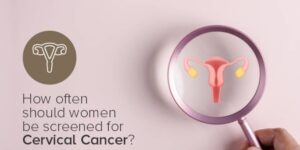In a groundbreaking development in the realm of reproductive medicine, the world’s first baby has been born using an innovative procedure known as Fertilo, an IVF method enhanced by stem cell technology. This marks a significant milestone in fertility treatments, holding immense promise for couples struggling with infertility. In this blog post, we explore what this breakthrough means, how it works, and the ethical considerations that accompany such cutting-edge medical advancements.
The Science Behind the Breakthrough
The procedure employed in this breakthrough is revolutionary. **Stem cells**, which are the body’s raw materials, can transform into any specific cell type required by the body. Here’s how this technology has been adapted for IVF:
How Stem Cell IVF Works
Research teams have utilized stem cells to create viable eggs from the cells of female patients. This involves the following key steps:
– Harvesting Stem Cells: Stem cells are extracted from the patient’s body.
– Inducing Differentiation: Through a complex process, these stem cells are influenced to differentiate into egg cells.
– Fertilization: These newly formed eggs are then fertilized with sperm using traditional IVF methods.
– Embryo Development: The embryos are monitored until they reach a stage where they can be implanted into the uterus.
This innovative procedure significantly expands the possibility of conception for women with reduced or exhausted egg reserves.
The Role of Technology and Expertise
Advanced laboratory techniques and a profound understanding of both stem cell biology and embryonic development are critical. The use of state-of-the-art imaging and genetic sequences ensures the highest quality of egg creation, improving success rates and minimizing risks.
Pioneering New Paths in Fertility Treatments
The birth of the first Fertilo baby represents a beacon of hope for many individuals and couples facing the harsh realities of infertility. This procedure is especially beneficial for:
- Women with premature ovarian failure
- Cancer survivors with damaged reproductive systems due to chemotherapy
- Older women with diminished ovarian reserves
For all these groups, the ability to create new eggs means a renewed chance at pregnancy and childbirth.
Impacts on Future Fertility Research
This development encourages further exploration within the fields of regenerative medicine and reproductive biology. By understanding the mechanisms behind healthy egg development and how stem cells can be manipulated, new fertility solutions could be constructed, potentially reducing the prevalence of various infertility issues.
Ethical Considerations and Public Perception
With breakthroughs of such considerable scientific magnitude come important ethical questions and societal implications. Stem cell therapy and its use in reproductive medicine inevitably spark debates about safety, moral values, and accessibility.
Safety Concerns
Ensuring the safety and efficacy of treatments is crucial. Before becoming widely accessible, such procedures undergo rigorous testing and regulatory review. This guarantees that all potential risks are understood and minimized.
Ethical Dilemmas
While the technology holds great promise, it raises ethical issues about the manipulation of human cells. Concerns about the potential for designer babies, cloning, or unforeseen genetic complications are topics of intense debate. Balancing innovation with ethical responsibility remains a challenge.
Regulatory and Accessibility Challenges
As with any medical advancement, regulatory bodies play a pivotal role in governing the usage of such technologies. Accessibility is also a pressing concern—ensuring that these advancements do not remain exclusive to the wealthy is pivotal for equitable healthcare.
Global Reactions and Future Prospects
The announcement of the first Fertilo baby has spurred international interest and discourse. Countries with robust healthcare and research infrastructures may swiftly incorporate these techniques, whereas others might face hurdles in adoption due to economic or regulatory constraints.
Encouraging Cross-Border Collaborations
This scientific milestone encourages collaboration across countries and disciplines. Through sharing knowledge and resources, improvements in fertility treatments can proliferate globally, ensuring advances are optimally utilized.
The Road Ahead
As Fertilo leads the way, the field eagerly anticipates further breakthroughs. Continued engagement with communities, ethical watchdogs, and scientific bodies will ensure that repeated successes are both ethically and scientifically sound.
In summary, the birth of the first Fertilo baby signifies a new dawn in fertility treatment, merging **stem cell technology** with traditional reproductive medicine. This innovation not only paves the way for numerous aspiring parents to fulfill their dreams of childbirth but also highlights the need for careful ethical consideration as science strides into the future.









